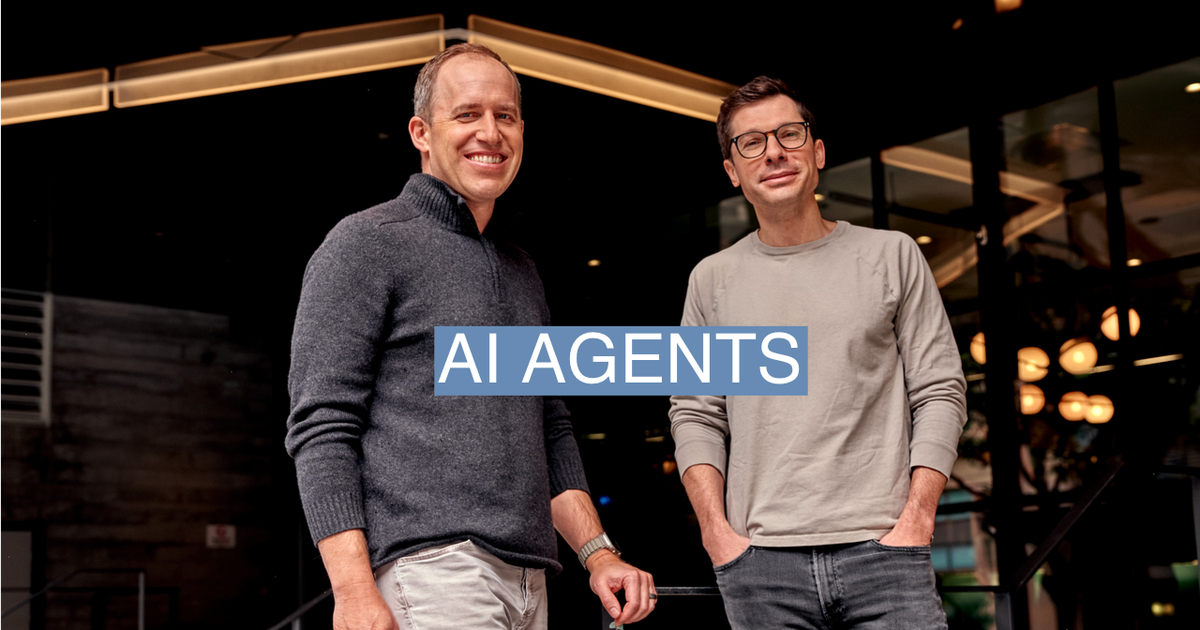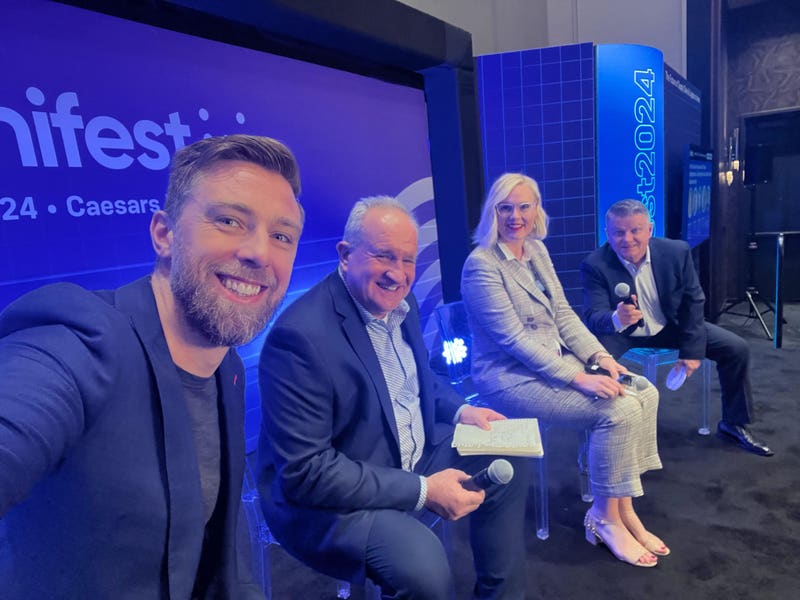Q: When you made the decision to establish a company, did you have a clear vision of your direction?
Bret: Our primary goal was to empower businesses with cutting-edge technology. We recognized the rapid pace of advancements, especially in tech hubs like San Francisco, where staying abreast of the latest research and developments posed a significant challenge. For major consumer brands, staying updated with technology trends was crucial but daunting. As the CEO of Weight Watchers, for instance, one couldn’t realistically keep up with reading research papers regularly. This realization led us to the idea of simplifying access to technology for businesses worldwide by offering a user-friendly solution. Engaging with various industry leaders such as CIOs, CTOs, and CEOs allowed us to understand their pain points. This exploration led us to focus on enhancing digital customer experiences through AI agents, envisioning a future where every company would require such an asset.
Our vision extended beyond mere customer service; we envisioned these AI agents becoming integral to a company’s digital identity. We anticipated scenarios where CEOs would instruct, “Update the agent with the new policies,” highlighting the pivotal role these agents would play. This long-term perspective resonated with us as we embarked on this venture, aiming for sustained commitment and impact. The immediate demand in customer service also presented a practical application of AI that could significantly enhance customer interactions.
Clay: Our approach from the outset has been customer-centric. Rather than imposing technology on businesses, we engaged in conversations to understand their needs thoroughly. This customer-led strategy guided our initial steps, ensuring that our solutions were tailored to address real-world challenges effectively.
Q: Are you inclined to develop proprietary models for your operations?
Bret: Our strategic direction veered towards an approach that avoids pre-training models. Focusing on autonomous agents within the realm of AI research, we observed a thriving open-source community dedicated to this domain. The concept of leveraging a constellation of models, including retrieval-augmented generation techniques, resonated with us due to its numerous benefits. By harnessing a range of existing models and techniques, we aimed to provide agile solutions that could cater to a diverse clientele without the need for expensive, bespoke models for each customer.
Our emphasis on fine-tuning and post-training, rather than building proprietary models from scratch, stemmed from a recognition of the evolving landscape of AI technologies. Acknowledging the distinction between frontier models and foundation models, we opted to capitalize on the progress in foundation models and augment them with unique value propositions specific to our platform. This strategic choice mirrors the trend in the industry where companies leverage existing infrastructure rather than reinventing the wheel, akin to the evolution of cloud services.
Q: Has the journey of developing autonomous agents posed unexpected challenges?
Clay: The process of developing autonomous agents has been an engaging exploration, mirroring human cognitive processes in problem-solving and interaction. Addressing pivotal aspects such as planning, memory recall, and ensuring factual accuracy has been central to our development efforts. Specialized models dedicated to planning and memory retrieval have been instrumental in enhancing the agent’s capabilities.
Ensuring the accuracy and reliability of responses has been a critical challenge, particularly in mitigating the risk of hallucinations common in large language models. Adopting a layered approach to supervision and integrating knowledge sources have been key strategies to safeguard against inaccuracies. Additionally, the integration with existing systems and data sources necessitated robust security measures to uphold data integrity and access controls.
Another significant challenge has been imbuing the AI agent with the brand’s values and voice, ensuring that it not only provides accurate responses but also reflects the company’s ethos. This endeavor underscores the importance of maintaining consistency in brand representation and customer interactions.
Q: How do you differentiate your company amidst industry competitors?
Bret: Our differentiation strategy revolves around delivering tangible outcomes for established consumer brands like Sonos, Sirius XM, Weight Watchers, and OluKai. Emphasizing real-world success at scale sets us apart in a landscape where many companies excel in showcasing prototypes but falter in achieving widespread impact. By catering to enterprise-level requirements, including stringent regulatory standards and data protection measures, we offer a platform that aligns with the distinctive needs of larger organizations.
Moreover, our innovative pricing model, based on outcomes, underscores our commitment to delivering value to customers. Operating on a pay-per-resolution basis ensures that our clients only incur costs when tangible benefits are realized. This customer-centric approach, coupled with our rapid market entry and focus on execution, positions us favorably in a competitive landscape.
Q: As a startup, how do you navigate external commitments such as chairing the OpenAI board?
Bret: My decision to join the OpenAI board stemmed from a profound sense of duty towards preserving the organization’s mission. Recognizing the pivotal role of OpenAI in driving AI innovation, I felt compelled to contribute my expertise to safeguard its continuity. Balancing this external commitment with our startup endeavors has required effective time management and a clear alignment of values.
The civic duty aspect of supporting OpenAI’s mission resonated with both Clay and me, underscoring the importance of upholding ethical standards in AI development. While external engagements can be demanding, strategic prioritization and a shared vision of technological advancement have enabled us to navigate these responsibilities effectively.
Q: What are your insights on the evolving landscape of AI and its implications for future job roles?
Bret: The emergence of roles such as AI architects signifies a shift towards empowering non-technical personnel to shape and optimize AI systems within organizations. This democratization of AI expertise opens up new career pathways for individuals transitioning from operational roles to AI-focused positions. Drawing parallels with the role of Salesforce administrators, who play a crucial role in configuring and maintaining Salesforce platforms, the concept of AI architects presents an opportunity for individuals to engage with AI technologies without extensive technical backgrounds.
While the integration of AI may lead to disruptions in traditional job roles, it also paves the way for more fulfilling and specialized positions. The transition towards AI-centric roles necessitates the development of accessible tools and training programs to facilitate skill acquisition among a broader range of professionals. By fostering a culture of continuous learning and adaptation, organizations can harness the transformative potential of AI while ensuring a smooth transition for the workforce.
This dynamic shift in job roles underscores the need for proactive measures to support individuals in adapting to the changing landscape of AI technologies, fostering innovation and growth in diverse industries.










